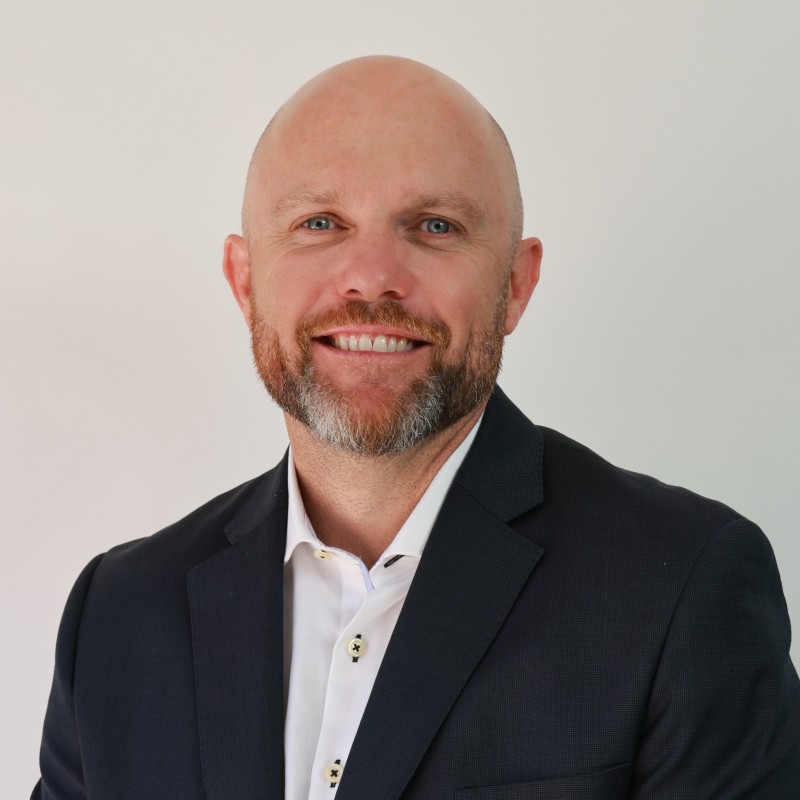Heather: So Marcus, why did you start Surgical Partners?
Marcus: I started Surgical Partners to address a gap in the market. There didn’t seem to be any integrator services in the healthcare industry that I could see. There was certainly nothing listed on the Xero site. To be honest, I’ve yet to come across any organised operation since then. So there still seems to be a wide open opportunity.
I guess where it all started for me was using Xero as a healthcare provider, as a healthcare client, and wanting to get the best out of that, to integrate it with the practice management system that we use, and to start using the Xero ecosystem to get other efficiencies across our business workflow.
I guess from benefitting from that ecosystem directly and through integrating our practice management system with Xero which was a very lengthy process, that got us familiar with the opportunity for ourselves, and once we started talking about it we realised that no one else was really benefitting from this, so Surgical Partners was created to address that very opportunity.
Heather: So from your own necessity, you developed a solution and you’re now using that solution to move out into other practices.
Marcus: That’s right. I think it’s one thing to be a technology familiar person and to find a solution but really to find the right solution, you need to live and breathe the problem.
Heather: Absolutely.
Marcus: I guess my background was … I was a healthcare analyst at Macquarie Bank for a long time covering a lot of the health services providers that were listed, so I had a pretty good understanding of the macro realities in the sector and the fiscal pressures from government and alike.
After I did my MBA I wanted to get more in the operational side and started running a specialist practice day surgery. Once I got in there and tried to work out, “What are the drivers of this business? How can we forecast? How can we tinker with the levers to improve it?” You come in and discover, “Well, actually no, it’s cash based.” The performance isn’t really known until the BAS is due at the end of the second month. You don’t know how January went until the end of May and of course it’s all cash based, so the information you’re getting is fairly limited in value in any case.
Heather: So you ran your own practice. You’re not a doctor are you? You’re not a medical person are you? Is that correct?
Marcus: No, that’s right.
Heather: But you ran your own practice?
Marcus: Well I wouldn’t say … I mean I didn’t have an ownership stake in it but I was brought in to basically improve the financial management and improve the processes and start taking a bit of the load off the principal surgeons to run the business with like health fund negotiations and the like.
Heather: Back to my question about Surgical Partners, what year did it start?
Marcus: I guess as an entity it was founded in November 2013 but I guess the development of the ideas and the concepts behind that would have started in probably early 2012.
Heather: What sort of business will benefit from your services?
Marcus: Pretty well every healthcare practice from dentists to small private hospitals in Australia and New Zealand. That’s a pretty wide opportunity but my best guess is somewhere around 10,000-12,000 practices. But no one is servicing them from a cloud integrator perspective as far as I’m aware, not in any formal approach in any case.
Heather: To go back to the question or your answer just previously, I meant to ask you, when you refer to practice management software, you weren’t talking about Xero’s practice manager? You were talking about other software I’m presuming?
Marcus: This goes to the heart of it. This is the heart of the problem.
Heather: Oh is it?
Marcus: Xero practice management system, no absolutely not. This is a very niche space and it’s serviced by many, probably too many, almost purely desktop based practise management system. These systems, you think of them as point of sale, but they’re also like CRM and ERP systems. They are the platform that runs the healthcare business. There are many options. I’m sure many of them aren’t making much money. A lot of them started in garages and probably still run from garages some of them.
Heather: A lot of them seem DOS based as well. My doctors, when I deal with them, I’m going, “That looks like the 1970s.”
Marcus: And in regulated health. So, just to differentiate between cosmetic or discretionary health like laser clinics or physios, may be a little more discretionary. If starting to get into regulated health, so regulated doctors and specialists and day surgeries and the like, there is no cloud offering. It just does not exist. There’s quasi-cloud using terminal services and things but essentially all the platforms are desktop based. There is no cloud thinking. There is no cloud integration thinking. It is really, and I don’t want to be too derogatory here, but it’s kind of last century insular thinking. Inside that practice management system holds an enormous value. You can imagine all the data that flows through there, it’s messy, and because our desktop based systems have limited integration capability, that valuation is trapped. The core of the Surgical Partners offering has gone from being a traditional integrator like an S&B or a Rype or something like that …
Marcus: So you really got to the core of the matter with that practice management system question. What Surgical Partners has evolved from is that sort of pure integrator to a systems provider of a standardised application or standardised user interface that collects the relevant raw transaction data from hopefully all practice management systems, and pushes that data into Xero as an invoice, credit note, payment. It is a translator, a standardisation clearing house if you like, of all that different transaction data from the PMS’ into Xero.
The challenge then becomes to get all the practice management systems who maybe have considered connecting to Xero or MYOB or QuickBooks or whatever but for many reasons, in almost every case, have not done despite being asked for the last 5-10 years. They haven’t done it. Here’s sort of a value proposition put to them which says, “If you connect to me in very raw sense, just export me your data or API me your data, I can provide this feature to you and essentially manage cloud based user application/user interface.” That’s what we’ve developed.
So we’ve become still a cloud integrator but more a Xero development provider which provides the conduit for integration of all practice management system with Xero.
Heather: Is that product that you’re referring to, is that CorePlus or is that something else?
Marcus: No …
Heather: It’s something else. Okay, sorry. I’m jumping ahead then.
Marcus: CorePlus is what I would call … I mean it is an existing Xero add-on and I know that CorePlus …
Heather: I wasn’t sure if it was you or not. I couldn’t work out what it was.
Marcus: So CorePlus, remember when I said regulated health, CorePlus does do some regulated health. Look, I don’t want to too much. They’ve got a very good cloud based product and I’m a big supporter of Yani and his team at CorePlus. They’ve been integrating with Xero for a long time but they’ve originally had a very clear focus on allied health and that’s different to where I’m coming from initially. I will get into allied health. I mean that’s the objective.
And probably not for your article here but at 2 o’clock this afternoon with Yani’s API team to connect his transaction data through our transaction hub. So we have technology developed by us, under my knowledge of knowing the problem. Having designed the solution for our practice management system, I know how to do that now for every system, well I think I do. We’ve now got this clearing house software which has been developed by a company out of Wellington called EndGame. They were the developers for a long time for Spotlight Reporting. They’re very familiar with the Xero API and very familiar with this kind of development.
We’d worked with them previously. So we worked with them to develop this connection, this integration hub is what we call it, it’s called hub integration, and that’s now … I guess when people come to Surgical Partners and I talk them through the wonders of cloud based business workflow, accounts payable, rostering time sheeting, point of sale integration, they often say, “What are you selling me?”
Often it’s much easier to say, “We have this integration product which will connect to your PMS and connect you to Xero, and yes we have the add-on integration services but the core missing piece is the conduit.” So that’s what I think is much more scalable obviously from our perspective but it’s something which is meeting a very unmet market need.
Heather: It’s kind of interesting that you didn’t go and say, “Why don’t I create a cloud based practice management solution.” Instead you said, “Why don’t I step back and create the conduit.”
Marcus: Now you’re asking the very good questions. No, I’m really glad you asked that. The reality is that the practice management systems are very entrenched and you can’t just change a PMS, like you can swap a VEND for a KOUNTA, I mean these are deeply imbedded processes that run everything in a medical practice, and medical business is hard. It is really hard. There’s health fund claiming. There are referral systems from GPs. There are online booking systems. There are feeds from radiology and pathology companies. There is letter writing. There is e-prescribing.
To connect to all these things and process all these different business workflows in one platform means these things are embedded are they are so hard to change. Even if someone came up with the greatest wiz bang cloud based system, which would take them years, but even if they did and priced it at next to nothing, they would still take 10 years to get half the market.
The philosophy has to be around just accepting that these 20ish practice management system providers are entrenched. There will be a slow selection and it will happen over time but at the moment they are not going anywhere and they are not integrating with anything. So you’ve got to play to that opportunity and play to that reality.
Heather: That’s really interesting. It’s actually a really interesting way to approach it but it does sound quite rational. I know that as soon as someone calls me up and says they’re from the medical industry, I just don’t want to help you because it’s so complicated.
Marcus: It gets worse. I mean I don’t know what kind of depth you want to go into with this article but I’m in touch with Xero all the time on this space because I don’t think they’ve found anyone that really understands it. I don’t want to blow my own trumpet.
Heather: Yes, I completely get that. You bill for something but you actually don’t get the payment for some crazy period of time because of all the different schemes and the army schemes and the medical schemes out there.
Marcus: Yes, and Xero kept saying to me, “Why don’t you just integrate this like a POS system, like Vend?” I said, “Well, it’s nothing like that. There are claims to insurers. There are claims to army, to garrison health, to Medicare, to DVA, to ACC in New Zealand. There are all kinds of different delayed payment mechanisms and how do you reconcile for that in the bank rec?”
These are all the problems we are slowly solving. We’re not going to have the one size fits all solution tomorrow but we’re slowly iterating towards it and I guess you have to rely on related technologies to develop. The one particular one which I’d like to mention in this article which I’m a really big fan of is Tyro.
Heather: That’s not on your website.
Marcus: No, it’s not and it should be. Tyro is an integrated Eftpos provider and an integrated health fund charging platform, much like HICAPS for Allied Health. They integrate with practice management systems for payments. The benefit for that is if that’s integrated, so the practice management system and the Eftpos machine are by definition the same, then when the Eftpos machine settles at the end of the day and the PMS exports to Xero saying, “I received this,” then they’re going to be the same in the bank rec because it’s all been sourced from the same place.
Those kinds of things are relatively low penetration but I guess we’ve had to plan this sort of standardisation platform, for want of a better term, for where things are going to be in three years. Things like Tyro are going to become far more prolific I guess.
The other big thing in health which is exceptionally supportive of this whole concept is a system called Eclipse, it’s payments. What Eclipse is, is a clearing house for health fund claims. All the practice management system claims though the Eclipse clearing house and that gets distributed to the funds into Medicare, but I don’t want to confuse it, and then the funds send a remittance advice back through that channel into the practice management system. The PMS has an invoice and it also has a payment coming back.
When we synchronise that with Xero, we send the invoice and then when the remittance advice comes back from Eclipse, we put the payment reference that the Eclipse remittance advice provides into the payment reference field in Xero, such that the bank feed when it comes in with that same payment reference, matches in the bank rec.
Heather: Wow.
Marcus: This has been years in execution.
Heather: No, I can imagine. I imagine all the bills are like $60, $60, $60, $60, and you’re just sitting there going, “I have no idea. Do we just click okay trying to reconcile them?” Yes, that’s amazing.
Marcus: You’ve sort of hit the nail on the head. Part of the problem here is that this is not a standard POS integration by any means. It’s actually a high invoice volume integration. We all know the soft limits of Xero around a thousand invoices a month; this will stretch that by definition. I’ve had to have lengthy discussions with the API guys at Xero to even progress this as a concept. I just said, “If you want to play in health, if you want to play in this space, this is the only way it’s going to work. So you might have to rethink some of those limits.” We’re going well beyond the simple interview. “The only way this is going to work is if you start reconsidering it because otherwise you can forget health.”
Of course the other main problem with health that differentiates it from any other point of sale is that 95% of practices are structured as a services trust. In effect, they are collecting billings on behalf of a doctor but that’s not their revenue. The way we replicate that is as a current liability. Even more complicated is the split of that liability into a share to the practices revenue and the rest into a payable account to the doctor. The split of that is often triggered by a payment. It’s triggered by raising the invoice.
So our technology can split that current liability billing based on payment, according to a matrix of this item code, this doctor has this percentage paid to them, or this percentage retained as a facility fee. What our system does is split every single invoice triggered by payment on the fly, so the doctors can know every day what their share of their billings is, accruing across the month. At the moment, they would only find out when they get an invoice or a statement on the 7th of the next month. But this enables them, and we built an app too, and iPhone app, so the doctor can say on the 10th of the month, “Wow, I can cover my private school fees.” I obviously get pretty excited about this stuff because it’s been a long …
Heather: Yes, absolutely. I know how confusing it is, so that’s sensational and obviously very useful. I think you’ve kind of touched on this but I don’t know whether at a high level simplicity view you might want to give me this, like paint the picture.
Heather: What does cloud integration in the medical industry look like? You’ve gone in and told me very much the detail of all the payment matches but maybe at a high level you’re making the paperless? You’re putting in Deputy? You’re putting in Invitbox?
Marcus: Or Receipt Bank, or whatever, yes absolutely. If you think about the core business processes of a practice, really it’s around payments, it’s around accounts payable and it’s around payroll. They are the three core elements. I mean if you think about debtor collection like Debtor Daddy or something, it’s just not relevant for these guys. I mean you might throw it into the margin in some practices but it’s just not really relevant work flow. Cash collection is not a problem. There might be a few other trivial … I don’t want to say trivial, but everything else is kind of marginal.
Heather: So you use Deputy?
Marcus: Deputy is a fantastic programme. Love it.
Heather: Love it.
Marcus: We’re an advisor partner with them and historically we have been with Invitbox but we’re developing a close relationship with Receipt Bank. They both have their benefits.
Heather: Yes, definitely.
Marcus: Another good solution for the health care space, especially larger practices, is Tanda, that’s another good rostering and time sheeting product.
Heather: Oh okay.
Marcus: We wouldn’t want to just be an advisor partner with one programme if we specifically use it. We’ve got to be independent for our …
Heather: So you try and be independent. So your Swiss army knife has a couple of different shaped drills on it essentially?
Marcus: That’s right.
Heather: So it’s not specifically, “These are the core things that we work with.” I’ve not really got into Tanda but I know everyone raves about Deputy. How long does an implementation take?
Marcus: The biggest problem is revenue integration and payments integration. To give you an idea of how that has to work, in Deputy implementation or Invitbox implementation, it takes as long as those sorts of things practically take to get up and running. I mean the time it takes to get your stuff, doing the leave requests, or the time it takes to process a couple of dummy pay runs, that’s just a normal implementation process for those kinds of technologies but the longest lead time is that actual integration of revenue. Because every debtor is being accounted for, not just end of day totals.
What you really have to do is run a parallel trial Xero account for x number of months, I’d say the best guide would be two or three months, and that does two things. One it gives you confidence that Xero is replicating what your source of truth or practice management system says is revenue, so you’re replicating that but also you’re providing a bank of debtor invoices because if you were to just start a live account and start exporting payments, there’d be no debtor invoices to find. You’ve got to run a parallel Xero account, download the debtor balances that are invoices, upload them into the live account and then go … so there’s a bit of an onboarding process. There are shorter cuts around that and special circumstances but that is the tougher issue and the longer of all the implementation timelines.
Heather: Does implementing your solution mean the doctors need to learn how to use a keyboard?
Marcus: No. the idea is that they use the toys they love which is their iPad or their iPhone to get onto CrunchBoards or to get onto Xero’s new great reporting or using our iPhone app which tells them what their split of revenues is anytime during the month. But they don’t have to worry about the complexity behind that. Healthcare is, as I said, so damn complex. All they want to know is, “How is my business going? How is it performing?” If all their getting is a BAS report at the end of May to tell them how they’re going in January, well that’s not efficient.
We’re talking about an industry that’s under a heap of pressure. You hear about it in the government all the time. They’re screwing price, they’re freezing Medicare pricing. These guys are under pressure and the solutions I’m talking about like the doctor revenue splitting and the integration pathways, these are … I don’t want to advertise pricing but several thousand dollars a year. In terms of just the … and again I don’t know whether I want this figure in there but to just give you an idea, we’re talking substantial bookkeeping savings.
I mean these guys just throw money at accounts to solve their problems. To give you an idea, when we converted over to this, our external accounting fees went from $60,000 to $5,000.
Heather: Wow.
Marcus: We’re talking about a multi-million dollar business that just downloaded a spreadsheet out of the system, gave it to the accountants and said, “Get it sorted out.” Now we’re talking about real time business intelligence, real time, every single day.
Heather: Yes, well that’s a staff member, $55,000.
Marcus: It’s huge. Let alone the benefits of online accounts payable management and rostering and time sheeting rather than spreadsheet rosters and paper timesheets and managing leave and stuff like that. I guess where I came to from my commercial opportunity perspective is I saw that there are a couple of accounting firms and we’re talking to most of them who run a heap of practices in health. They fly their flag on healthcare.
These guys, a lot of them, are converting to Xero wholesale, all their clients are onto it, or QuickBooks or whatever. They’re moving to the cloud because they know the benefit but they can always suggest Deputy or they can suggest Invitbox, and so they should, and they absolutely should. The tool they don’t have and they’ve been looking for forever is the revenue and payment integration. That’s what they’ve never been able to do. So that is the missing link in the sense of the market.
Heather: That tool that you have, do you define it as an add-on or is it just something that you implement?
Marcus: Well, that’s the thing, I’ve been talking to Xero about this lately and they’re starting to understand that while I’ll still be a cloud integrator, I’m more of an add-on in effect.
Heather: Okay.
Marcus: I’m trying to think of an equivalent. Can you think of an equivalent in another industry?
Heather: I’m thinking Paul MacNeill at Wise-Sync. It’s not in the medical industry. He works in a different sort of industry but he’s kind of doing that complicated thing that you’re doing. Have you heard of him?
Marcus: I haven’t but I’ll look.
Heather: He does single batching and he works with this whole massive organisation over in America, this whole massive like iPhone app organisation in America which isn’t iPhone apps and stuff like that but that’s who I’m kind of thinking is running similar to you. I’ll introduce you to him after this session because he’s kind of suggested the same sorts of problems as you’re suggesting, however in a different industry. I can’t even think what the industry is now. Oh, I know what it is, it’s computer tech industry which is a bit weird but all of the ins and outs of the computer tech industry.
Marcus: Right.
Heather: If someone reading this is interested in getting involved with you and what you’re doing, what are you looking for? Are you looking for partners, staff, developers, franchisees?
Marcus: I guess where this is evolving to is less of a consulting service and what I see is more accounting firms and consultants who are Surgical Partner affiliates, who are familiar with the integration platform, and who can deploy it. Me and my team, and yes I’ll need staff as it grows, we’ll do the technical deployment and the technical support but at the end of the day, the onboarding process and all the value that comes with that, it might be implementing Deputy or whatever, these are real win-wins for the consultant, for their brand, for us in terms of volume and for the client no doubt.
I guess the benefit to the Surgical Partners affiliate, be it an accounting firm or consultant, is that they might get some add-on revenue or whatever, but what they really get is a whole wealth of data, real time performance measurement on which they can sell high value add services. It’s the same as the bookkeeping accounting model that Xero are pursuing really which is cut out all the day-to-day grind and you leverage that to provide higher value added services. That’s what I think the Surgical Partners offer is to healthcare focused accountants and healthcare focused consultants.
So certainly looking for them and after them, certainly will be after staff. In terms of the high level discussions with large players in this space, I’ve been having those for some time. I think profiles like this will help but I can’t say with who. During the next two days there are some very significant meetings with large players in the space.
Heather: It seems like huge opportunities and I don’t hear of anyone else doing what you’re doing. We’ve got financial data that’s two to three months old, so you’re now saying that the doctors actually have access to real time data in their hand.
Marcus: In their hand, yes. They can delve into Xero as much as they want but if they want … like what I’ve had or iPhone app which just tells them the summary information … this is the problem with Xero, my understanding is Xero does not let other mobile apps query the Xero database. Do you understand any different?
Heather: Okay, but you would go into CrunchBoards directly or you would go into Spotlight directly.
Marcus: The thing is all the transaction data flows through us anyway. We don’t need to go into the Xero data if it’s all flowing through our app anyway.
Heather: Oh okay.
Marcus: In the IOS app, it doesn’t query the Xero database, it queries everything that we’ve put in that Xero database. That’s where we can come up with an app that’s useful, only around revenue of course, it’ll have total practice revenue and maybe growth month-to-date since last month, or so far this financial year versus previous. Then it will have my billings in me doctor, and my share of billings. Again, all the pertinent information that a doctor really needs to know, in terms of profitability of the practise, they don’t need to know that every single day. They can go in and look at that in their Xero account every month or whatever access they have as an owner or part owner.
Heather: Absolutely.
Marcus: That’s the value add from a doctors perspective is purely around the data we have, that we get.
Heather: So you’re saying they can just go to your core product and get that but you’re looking at another solution to build on top of that with that core information that they want?
Marcus: Yes, I guess we need add-on modules. At the end of the day, WiseSync could come along and do this. It’ll take them years I’ll tell you. It’s taken me a long time and I don’t think I’m a technology ditz. Maybe sometimes I do pass for one but you’ve just got to find all the potholes and that’s the problem, it’s never the body of work that’s the issue, it’s the exception transactions that you find.
Heather: There must be a lot of Australian compliance around what you are doing, how easy is it going to be to replicate it and take it to a global market?
Marcus: I think healthcare is infinitely complex as it is. I think if we were to go to the US market, that would just be another infinity of complexity. The health fund and HMO claiming process over there is just … going through what I’ve gone through over the last couple of years, you just wouldn’t want to take that to another degree of complexity. I had some solutions over there. CareCloud is one that comes to mind, so carecloud.com, which is part of this space. I only found out about them after I started. It wasn’t like I was a fast follower of them.
I would say our opportunities are in other regulated healthcare markets such as Canada, the UK, potentially Singapore/Hong Kong but really there is so much … it is just a wide open opportunity in Australia and New Zealand.
Heather: Can I ask you just to get some sort of personal insights from yourself. You studied your MBA at INSEAD. What were your takeaways from your time there that perhaps you’ve applied into the business?
Marcus: I guess I really didn’t know going into NCAD how focused and the extent of professorial talent around entrepreneurship. I guess that comes a lot from the history of NCAD being something for family companies in the traditional sort of old money, European market. As a result of that, they had a focus on family wealth building which became kind of an entrepreneurship focus. That’s what I didn’t quite know going in and I came out of it … there was a course there called Realising Entrepreneurial Potential. 40 teams of 5 students, so 200 students, were doing this course. Out of 40 teams, there was a project where at the end you presented to venture capital investors, and we won.
Heather: Wow, congratulations.
Marcus: For me that was a real eye opener.
Heather: What was the project?
Marcus: It was actually an air conditioning project. It was pretty dull in terms of technology. It was sort of an air conditioning/HVAC roll up but it obviously struck a chord for some reason. So that gave me a real buzz for it. I think that personally having worked in banking and having worked as a manager inside an operational business, I’ve discovered that what really gets me going is being solely responsible for my own destiny and revenue. I live and breathe this sort of stuff. It’s every waking hour and I dream about it. I just love it.
Heather: I’ve just got one final question for you, which I think we were talking about but I’m not sure if I actually clarified it, the future for Surgical Partners is that you’re moving from perhaps an integrated towards a developer of this product which will then …
Marcus: It will facilitate integration opportunity. It’s still very much tied to integration.
Heather: Yes.
Marcus: I mean by definition it’s integration but maybe not in the traditional sense of the cloud integrated term that Xero uses, and that’s purely because there is no just Vend to Xero platform integration that a retail integrator can just run with and then throw in little add-ons here and there. I mean it’s so much more involved than that.
Heather: Absolutely. It’s quite funny to hear the word traditional and cloud integrator in the same sentence. It’s like, “Whoa, we’ve already got to that stage.” Okay, excellent. Thank you so much for your time.





